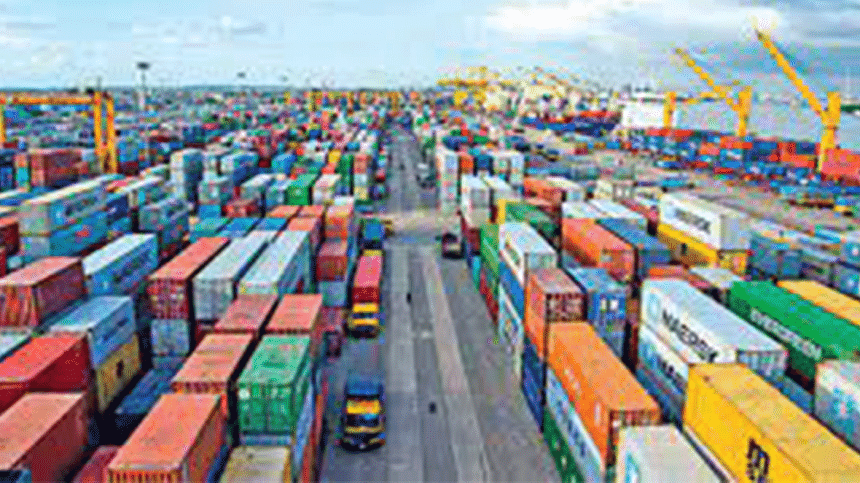Time for tariff reforms to improve trade competitiveness: experts

Tariff rationalisation is extremely important for Bangladesh to boost exports, improve trade competitiveness and maintain steady economic growth, speakers said yesterday.
"Tariff rationalisation is a big challenge as it affects export. This is the high time for the formation of the national tariff policy," said Zaidi Sattar, chairman of the Policy Research Institute (PRI) of Bangladesh.
Also, tariff protection is a significant barrier for signing the Preferential Trade Agreement (PTA) and Free Trade Agreement (FTA) and attracting foreign direct investment, he said.
"Time is ripe for a forward-looking trade agenda that goes beyond tariffs to include factor and non-factor services exports, digital technologies, and climate-related reforms as well as flexible thinking on regional cooperation, FDI and FTAs to boost competitiveness."
He was speaking at a virtual discussion on "Boosting Bangladesh's Trade Competitiveness" jointly organised by the PRI and World Bank.
According to speakers, the export led-economic growth of the country will further face challenges in the post–LDC (least-developed country) period as the trade benefit will erode.
So, Bangladesh needs to deepen integration with other countries and trade blocs to maintain the current export growth after graduation as attaining preferential market access to the European Union might be difficult.
The country also needs to improve export and market diversification as the export is highly concentrated only in garment items, they said.
Speaking at the event, Commerce Minister Tipu Munshi said Bangladesh has the capacity to sustain any shock in the export trade as the government and local exporters have improved capacity.
For instance, Bangladesh has overcome the severe fallouts of Covid-19 as garment shipment rose despite the coronavirus pandemic.
During the difficult period, local exporters have stepped up to make even personal protective equipment to offset the export shock.
The government is negotiating with the major trading countries to sign PTAs, FTAs and Comprehensive Economic Partnership Agreement (CEPA) to address the trade benefit in the post-LDC era.
MA Razzaque, research director of the PRI, said more than 22 per cent of revenue collection will drop after the LDC graduation. However, with the current capacity and competitiveness, Bangladesh's export earnings should have crossed $100 billion.
If Bangladesh can't manage to obtain the GSP Plus status in the EU market, local exporters will have to face tariffs under the most-favoured-nation criteria, Razzaque said. "The tariff regime of Bangladesh needs to be immediately reformed," said Hoon Sahib Soh, practice manager of the World Bank, adding that the high protection does not facilitate export-led economic growth.
Bangladesh participates less in the global value chain (GVC), said Nora Carina Dihel, senior economist of the WB, adding that with the para-tariffs, tariff rates in Bangladesh increase from 6 per cent to 50 per cent. She said GVC participation and regional linkage increase export survival.
Csilla Lakatos, another senior economist of the WB, said Bangladesh's lack of export diversification can be partially attributed to the protective trade regime.
The impending erosion of trade preferences due to graduation from the LDC status further challenges Bangladesh's export competitiveness.
Rizwan Rahman, president of the Dhaka Chamber of Commerce and Industry, said the government has reduced the corporate tax by 5 percentage points over the last two fiscal years. "Such gradual reduction should be continued to make the rate rational."
Sadiq Ahmed, vice-chairman of the PRI, said Bangladesh should be justifiably proud of its export performance and for the export recovery from the severe fallouts of Covid-19.
Yussuf Abdullah Harun, a lawmaker, also spoke.

 For all latest news, follow The Daily Star's Google News channel.
For all latest news, follow The Daily Star's Google News channel. 



Comments